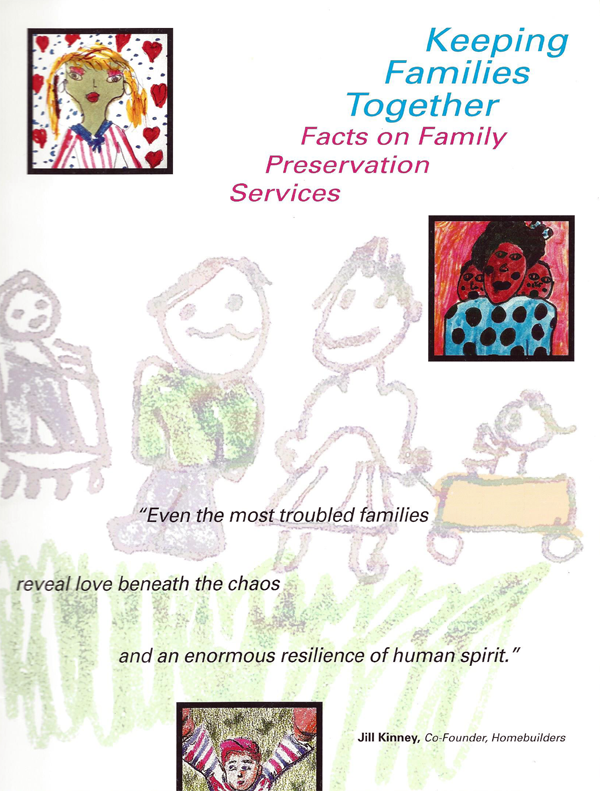 On Saturday, October 18, 2014, I woke up at 8:30 AM with the thought: “What can IFPS staff do to protect themselves from this deadly disease called Ebola?” While it is pretty strange that this was the first thing that came to my mind, it makes sense to think about it as the majority of our work with the IFPS families is in their natural environment.
On Saturday, October 18, 2014, I woke up at 8:30 AM with the thought: “What can IFPS staff do to protect themselves from this deadly disease called Ebola?” While it is pretty strange that this was the first thing that came to my mind, it makes sense to think about it as the majority of our work with the IFPS families is in their natural environment.
What are the Risks for IFPS Staff?
The media attention on Ebola reminds us that it is important to educate ourselves, and in some cases, our IFPS client families about contagious diseases, how they are transmitted, and what steps we can take to protect ourselves. The majority of IFPS workers will never be in a situation that puts them at risk of Ebola but there are many highly contagious diseases that we are more likely to come in contact with: colds, flu, pneumonia, gastrointestinal diseases, pink eye and skin infections, lice, measles, mumps and chicken pox. We’re entering the flu season and the holidays are approaching. People are more likely to get sick at this time of year.
In IFPS we teach our clients strategies for prevention and we intervene as needed. These are the same steps for minimizing the spread of infectious diseases. Prevent whenever possible and seek medical intervention as needed. You can teach and model these strategies for your clients.
General Guidelines for Protection and Prevention
- Wash your hands with soap and water. When you can’t wash your hands, use hand sanitizer.
- Keep yourself and your family current on flu and other vaccinations.
- Take care of yourself: eat well, get enough sleep and take breaks when you aren’t with clients.
- Stay home if you get sick, especially if you have a fever or are vomiting.
- Pay attention to outbreaks such as norovirus or chicken pox or flu—in your own community as well as your clients’.
Another important prevention strategy is to learn if anyone in your client families has traveled overseas or has been in contact with contagious diseases such as malaria, parasites, tuberculosis, tropical diseases or Ebola.
On the Subject of Ebola…
Few, if any, IFPS workers will ever be a situation that puts them at risk of Ebola. There have been very few cases in the United States. The highest risk is for healthcare workers caring for Ebola patients and family and friends of those patients.
According to the Centers for Disease Control and Prevention (CDC): “All cases of human illness or death from Ebola have occurred in Africa (with the exception of several laboratory contamination cases: one in England and two in Russia). One travel-associated case was diagnosed in the United States on September 30, 2014. On October 12, 2014, a healthcare worker at Texas Presbyterian Hospital who provided care for the index patient has tested positive for Ebola. CDC confirms that the healthcare worker is positive for Ebola.” www.cdc.gov/vhf/ebola/exposure
“Ebola, previously known as Ebola hemorrhagic fever, is a rare and deadly disease caused by infection with one of the Ebola virus strains. Ebola can cause disease in humans and nonhuman primates (monkeys, gorillas, chimpanzees). Ebola is caused by infection with a virus of the family Filoviridae genus Ebolavirus… Ebola viruses are found in several African countries. Ebola was first discovered in 1976 near the Ebola River in what is now the Democratic Republic of the Congo. Since then, outbreaks have appeared sporadically in Africa. The natural reservoir host of Ebola virus remains unknown. However, on the basis of evidence and the nature of similar viruses, researchers believe that the virus is animal-borne and that bats are the most likely reservoir. Four of the five virus strains occur in an animal host native to Africa.” www.cdc.gov/vhf/ebola/
Symptoms of Ebola according to the CDC website:
- Fever
- Severe headache
- Muscle pain
- Weakness
- Diarrhea
- Vomiting
- Abdominal (stomach) pain
- Unexplained hemorrhage (bleeding or bruising)
“Symptoms may appear anywhere from 2 to 21 days after exposure to Ebola, but the average is 8 to 10 days. Recovery from Ebola depends on good supportive clinical care and the patient’s immune response. People who recover from Ebola infection develop antibodies that last for at least 10 years.” www.cdc.gov/vhf/ebola/symptoms
Prevention
The following are steps prevent the spread of the Ebola virus:
- Wash your hands at all times with anti-bacteria soap or use hand sanitizer with alcohol-base
- Avoid contact with blood and body fluids of any person, particularly someone who is sick
- Do not handle items that may have come in contact with an infected person’s blood or body fluids.
- Do not touch the body of someone who has died from Ebola.
- Seek immediate medical care if you develop a fever (100.4 F/38.0 C or higher), headache, muscle pain, diarrhea, vomiting, stomach pain, or unexplained bruising or bleeding.
- The CDC website has a checklist for health care workers that provides additional information: http://www.cdc.gov/vhf/ebola/pdf/could-it-be-ebola.pdf
For more information about Ebola, please visit the CDC website: www.cdc.gov/vhf/ebola/
Posted by: Moneefah D. Jackson


 When I was getting my Masters in Social Work, my advisor suggested a field placement at Homebuilders™. At that point I had no idea what Homebuilders™ was, what kinds of interventions they provided, or what skills I might learn. I’d never actually worked with a family in their home. It turned out to be an incredible experience—an introduction to a set of values about families as well as the opportunity to learn skills and interventions that truly helped families. That was the start of my IFPS career. After I finished my MSW I went to work for Homebuilders™. A few years later I joined the Family Preservation Practice Project, a collaboration between the University of Washington School of Social Work and Behavioral Sciences Institute, which developed the Homebuilders™ program. That project gave me the opportunity to have one foot in the clinical side and one foot in the academic side of IFPS.
When I was getting my Masters in Social Work, my advisor suggested a field placement at Homebuilders™. At that point I had no idea what Homebuilders™ was, what kinds of interventions they provided, or what skills I might learn. I’d never actually worked with a family in their home. It turned out to be an incredible experience—an introduction to a set of values about families as well as the opportunity to learn skills and interventions that truly helped families. That was the start of my IFPS career. After I finished my MSW I went to work for Homebuilders™. A few years later I joined the Family Preservation Practice Project, a collaboration between the University of Washington School of Social Work and Behavioral Sciences Institute, which developed the Homebuilders™ program. That project gave me the opportunity to have one foot in the clinical side and one foot in the academic side of IFPS.

